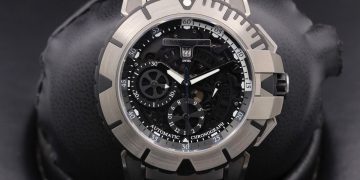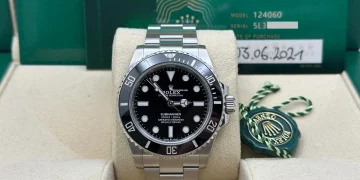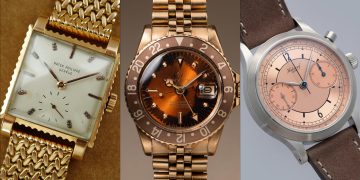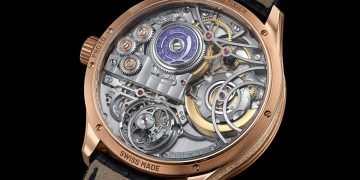Magnetism is one of the most powerful forces in nature, capable of affecting everything from the navigation of migratory birds to the operation of complex electronic devices. In the world of horology, magnetism can be both a blessing and a curse. While magnetic fields are essential in the functioning of certain watch components, they can also disrupt the delicate mechanics of mechanical watches, causing timekeeping errors and strange phenomena, including the eerily loud sounds sometimes attributed to magnetized watches.
But do magnetized watches really “scream”? What causes this strange phenomenon, and more importantly, how can it be avoided or fixed? In this article, we’ll dive into the science of magnetism’s effects on mechanical watches, explore the weird and sometimes creepy sounds that magnetization can cause, and provide simple methods for demagnetizing your timepiece at home.
The Strange Phenomenon: Can Magnetized Watches Really Scream?
While the term “screaming” may seem a bit of an exaggeration, the sounds produced by a magnetized watch can be disconcerting. Some watch owners have reported hearing a high-pitched, almost electrical noise emanating from the movement of their watches when they become magnetized. This can occur when the internal components, such as the hairspring or balance wheel, are influenced by an external magnetic field, which causes them to oscillate or vibrate in ways that are out of the ordinary. These vibrations can result in the odd sounds that some describe as “screaming.”
How Does Magnetism Affect Watch Movements?
To understand why a magnetized watch might “scream,” it’s crucial to first grasp how magnetism affects the inner workings of a mechanical watch. A mechanical watch relies on a series of finely tuned components that work together to keep time accurately. The most important of these is the balance wheel and hairspring, which oscillate back and forth to regulate the timekeeping process.
- The Balance Wheel and Hairspring
The balance wheel and hairspring are the heart of a mechanical watch’s timekeeping. The balance wheel swings back and forth, and the hairspring (which looks like a small, coiled spring) helps regulate this motion by providing resistance. If either of these components is affected by a magnetic field, the delicate balance between them can be disrupted, causing irregular oscillations or halting the movement entirely. - Magnetic Fields Disrupting Timekeeping
When a watch is exposed to a magnetic field, components made of ferromagnetic materials (such as steel) within the movement can become magnetized. This can cause the hairspring to stick or “clump” together, altering the timekeeping function of the watch. As a result, the balance wheel may start oscillating in a way that it was not designed to do, producing noise and possibly affecting the overall accuracy of the watch. - Audible Consequences of Magnetization
The “screaming” sound often attributed to magnetized watches is likely the result of the hairspring and balance wheel being out of sync. When the balance wheel experiences irregular movements due to the magnetic influence on the hairspring, the vibrations can produce an audible sound. This phenomenon is more noticeable in watches with particularly sensitive movements, where small changes in the oscillation can have a significant impact on performance.
The Science Behind the “Screaming” Sound
While it’s easy to imagine a mechanical watch “screaming” as a supernatural occurrence, the truth is rooted in science. To understand why a magnetized watch might make noise, we need to explore the mechanics of the components that cause the vibrations.
- Ferromagnetic Materials in Watch Movements
Most mechanical watches are made with components that include ferromagnetic materials—metals that are attracted to magnets, such as steel. These materials are essential to the functionality of the watch, but their properties make them susceptible to the influence of external magnetic fields. When exposed to strong magnets, parts of the watch can become magnetized, which leads to irregular behavior in the movement. - Imbalanced Oscillations
The balance wheel in a mechanical watch is designed to oscillate at a specific frequency to keep time accurately. The hairspring, which is the fine spring that controls the oscillations of the balance wheel, works in tandem with the wheel to ensure smooth, consistent motion. When magnetization occurs, the hairspring may become “stuck” or attract unwanted friction, causing the balance wheel to oscillate irregularly. This imbalance can result in audible vibrations, which may sound like “screaming.” - The Interaction Between Magnetic Forces and Watch Components
When a watch is magnetized, the interaction between the magnetic field and the ferromagnetic materials in the movement causes a misalignment of the components. This can lead to an increase in friction, which in turn creates irregular oscillations in the balance wheel and the hairspring. The friction between these components may produce a buzzing, whirring, or even high-pitched squealing noise as they struggle to maintain their intended motion.
The Magnetization Process: How Watches Get “Screwed Up” by Magnets
Magnetization doesn’t necessarily have to come from exposure to large, industrial magnets. Everyday items, such as smartphones, speakers, or even the strong magnets in refrigerator doors, can exert enough magnetic force to affect a mechanical watch. However, some sources of magnetism are much stronger than others. The most common ways a watch can become magnetized include:
- Exposure to Electronic Devices
Modern electronic devices such as smartphones, tablets, and laptops contain magnets and electromagnetic fields. If your watch is too close to these devices for prolonged periods, it can pick up magnetism from the field, affecting its delicate components. - Speakers and Headphones
Large speakers or headphones with powerful magnets can also cause a watch to become magnetized. Many watch enthusiasts have accidentally found their watches magnetized after placing them near their home audio equipment. - Magnets in Wallets and Bags
Magnetic closures in wallets, bags, and briefcases can easily magnetize your watch without you realizing it. It’s important to be cautious when placing a mechanical watch in close proximity to these items. - Industrial Magnets
Of course, the most obvious culprits for magnetization are industrial or scientific magnets. If your watch comes into contact with these types of magnets, the effects will likely be more severe, potentially disrupting its timekeeping in ways that are difficult to reverse without professional assistance.
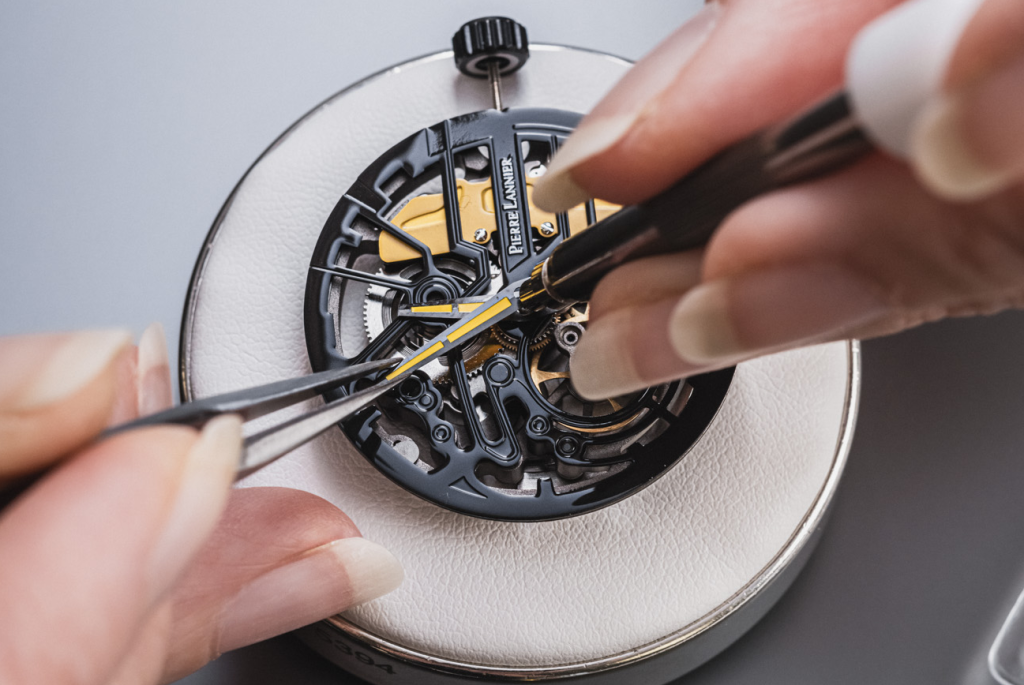
Demagnetizing Your Watch: Simple At-Home Solutions
The good news is that magnetized watches can be demagnetized, and there are several ways to do it. If you notice that your watch is running erratically or if you’re hearing strange sounds coming from your timepiece, the first thing to check is whether it has been magnetized. Fortunately, you can often fix the problem at home with a simple tool or technique.
1. Using a Demagnetizer Tool
The most effective way to demagnetize a watch is to use a specialized demagnetizer. These small, handheld devices are designed to eliminate the magnetic fields that have been induced in the watch’s movement. Here’s how to use one:
- Turn on the demagnetizer and place the watch near the tool’s opening.
- Slowly move the watch in a circular motion around the device to evenly demagnetize the watch.
- Once the watch has passed through the device, check to see if the timekeeping has returned to normal.
These tools are relatively inexpensive and can be found online or in watchmaking specialty stores. For most watch enthusiasts, having a demagnetizer tool is a great investment, especially if you own multiple mechanical watches.
2. Using a Household Magnet
If you don’t have a demagnetizer on hand, you can try using a simple household magnet. The process is a bit more delicate, but it can be effective for minor magnetization. Hold the watch near the magnet and gradually move it in a circular motion around the watch. Keep the distance between the magnet and the watch consistent, and make sure to move slowly. Be cautious not to expose the watch to excessive magnetic fields, as this could cause more harm than good.
3. Seek Professional Help
If your watch is heavily magnetized, or if the problem persists after attempting to demagnetize it, it’s a good idea to take it to a professional watchmaker. They will have the proper equipment to demagnetize your watch and ensure that the movement is functioning as it should.
Preventing Magnetization: Tips for Keeping Your Watch Safe
While demagnetizing techniques are helpful, prevention is always better than a cure. To keep your mechanical watch running smoothly, here are a few tips:
- Keep Your Watch Away from Magnets
The simplest way to avoid magnetization is to keep your watch away from strong magnets. Be mindful of your watch’s proximity to electronic devices, magnets in bags, and other sources of magnetic fields. - Store Your Watch in a Safe Place
Use a watch box or a soft pouch to store your watch when you’re not wearing it. This will protect it from accidental exposure to magnetic fields. - Use a Watch Winder
If you have an automatic watch, a watch winder can keep it running when you’re not wearing it. Some watch winders even come with anti-magnetization features, providing extra protection for your timepiece.
Conclusion: The Unsettling Science of Magnetization
While the idea of a “screaming” magnetized watch may sound strange, it’s just one of the odd consequences of the intricate mechanics that drive a mechanical timepiece. Understanding how magnetism affects your watch’s movement is essential for maintaining its accuracy and longevity. By following simple steps to demagnetize your watch and keeping it away from sources of magnetism, you can ensure that your timepiece continues to run smoothly without the eerie noises that might suggest otherwise.



